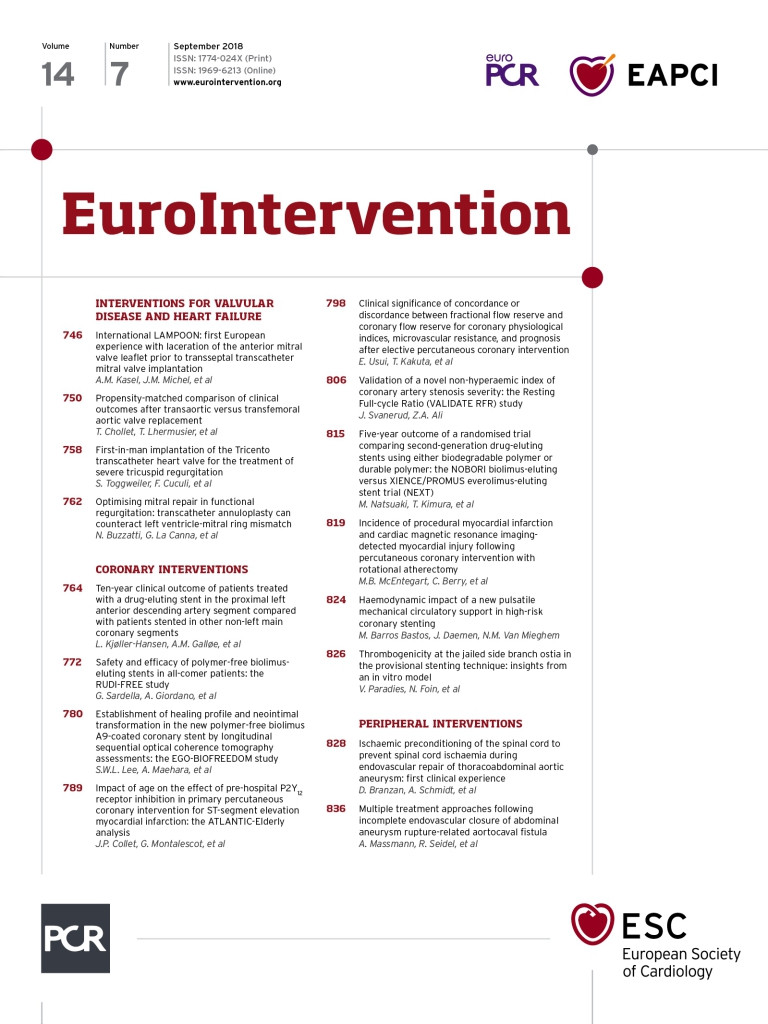

Despite the considerable efforts made in developing techniques to optimise procedural success and long-term outcomes, bifurcation lesion PCIs are still associated with higher event rates than non-bifurcation interventions. Provisional stenting with stenting of the main vessel and optional side branch (SB) stenting is considered the gold standard approach, while the benefit of routine SB strut dilatation or kissing balloon inflation remains unclear.
Even though overhanging struts in front of the SB ostium are thought to act as a focal point for thrombi formation and consequently possible stent thrombosis, a direct causal effect between jailed struts and increased thrombogenicity has not yet been shown.
Metallic stents (XIENCE V®, n=1; 3.0×23 mm [Abbott Vascular, Santa Clara, CA, USA]; Resolute™, n=1; 3.5×33 mm [Medtronic, Minneapolis, MN, USA], and Integrity™, n=2; 3.0×18 mm [Medtronic]) were deployed in two different bifurcation silicone vessel models (proximal=3.5 mm, distal=2.75 mm and SB=2.75 mm, n=2; and proximal=4.5 mm, distal=3.5 mm and SB=3.0 mm, n=2) (Panel A), with proximal optimisation with 4.0 and 5.0 mm NC balloons (visually confirmed from OCT pullback) and then perfused with porcine blood at a rate of 200 m/min for four minutes1. Both OCT (Panel B) and immunofluorescence analysis with antiplatelet antibodies CD61 (Panel C) showed that the mean cross-sectional clot area at the bifurcation region was higher than at the proximal and distal regions (Panel D, Panel E).
In summary, in our model, struts floating at the SB orifice were shown to affect thrombus formation mechanism, but whether a similar mechanism may contribute to late SB compromise after DAPT discontinuation in clinical settings remains unknown.
Conflict of interest statement
The authors have no conflicts of interest to declare.

